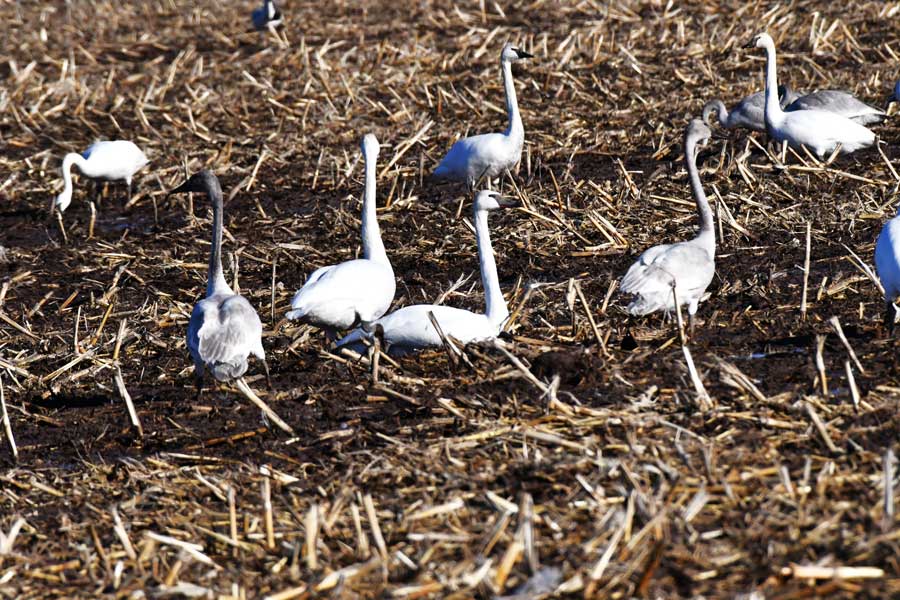Warm weather brings back the waterfowl
Published at | Updated at
It is amazing what a few days of warm weather can bring into southeastern Idaho, by softening the snow and exposing grains, rotten potatoes and seed-producing plants left for migrating birds.
Deer Parks Wildlife Management Area west of the Menan Buttes has become a very busy place this past week with hundreds of trumpeter swans, Canada geese, and ducks showing up to feed. In a harvested corn field across from Ririe High School, hundreds of trumpeters and Canadas have also found enough leftover corn to draw them to that field.
On Monday, warm temperatures along with rain took most of the snow around Ririe and it did not take long for the waterfowl to find the exposed fields. Even the deer herd that has wintered near Ririe Reservoir have moved to higher ground to feed on the exposed farm crops.

Tuesday afternoon, I spent time at Deer Parks WMA watching family groups of trumpeters flying in to feed on the wheat left standing for them by the Idaho Department of Fish and Game. Hundreds of mallards, with a few northern pintails and American wigeon mixed in were flying in constantly to a cornfield between a canal and the Snake River. I observed several near collisions with ducks, geese and swans dropping in from all directions.
There were several interesting things that I observed while watching all the activities during that afternoon. There was an individual immature trumpeter that seemed to be unsocial. It would leave the hundreds of feeding birds, fly out and land on a snow-covered field. A mature trumpeter, probably one its parents, would fly out and land by it, appearing to try to talk to it. Then together they would fly back to the huge flock but within a few minutes, the youngster would once again leave them, returning to the same place. The adult would fly back to it and this happened three times while I watched them.

Another strange phenomenon that trumpeters have is, a family group or two couples would get together in a circle and appear to be arguing while all of them would be flapping their wings. It may be that they have just met some old friends that they have not seen for a while, but it can be very entertaining to watch them.
Tuesday, I saw several trumpeters with bent necks, both immature and mature birds but mostly immature ones. trumpeters fly with their necks stretched out straight and flying with a crooked neck is probably a pain – in the neck! I also noticed that they were usually flying alone and are not paired up.

The migration that I witnessed this week was not the main migrations to come. March is usually the month for large waterfowl migrations. Most of the trumpeter and tundra swan migrations will begin about March 10 and they are probably not the first. Sandhill cranes usually show up around March 5 and we can start looking for snow geese to show up around March 15. The duck migrations start in March but usually peak about the first of April.
I have also seen several male red-winged blackbirds that have started establishing their breeding territories. I have even heard one singing his availability; or maybe he was just practicing as most of the females have not arrived yet. American robins and a Red-napped sapsucker have showed up in my backyard.
March is always a fun month for me as I watch for the arrival of the different species of birds that show up.



Living the Wildlife is brought to you by Yellowstone Teton Territory. Experience 7,500 square miles of untamed wilderness in Eastern Idaho's Yellowstone Teton Territory. Where majestic peaks meet endless adventure, your perfect outdoor escape is waiting. Start planning at YellowstoneTeton.com.



